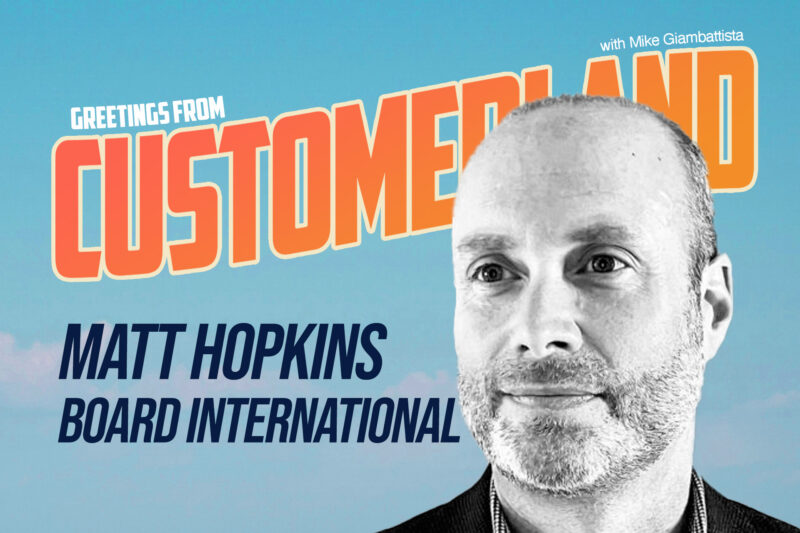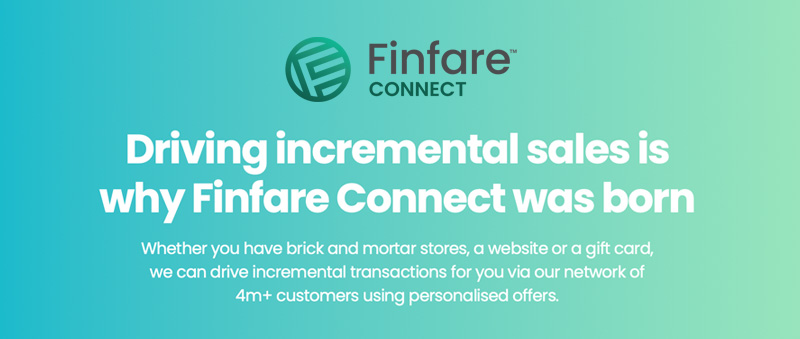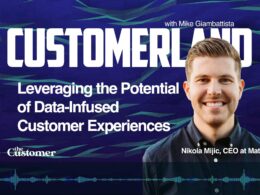Join us for an insightful conversation with Matt Hopkins from Board International as we discuss the evolving landscape of retail technology, particularly in inventory management and customer engagement. Retailers today are navigating through a vast amount of customer data. In our discussion with Matt, we learn how this data plays a crucial role in creating more personalized customer experiences and in making informed strategic decisions. We also look at how businesses are moving beyond traditional tools towards more sophisticated planning solutions, improving practices in inventory management across the retail sector.
Our discussion progresses to the emerging role of Generative AI in enhancing customer collaboration and its impact on social commerce. We consider the shift from fixed seasonal planning to more dynamic, real-time approaches that align closely with current market trends and consumer preferences. Matt provides insights into the challenges and opportunities of personalizing customer experiences and the increasing demand for authenticity in retail. He highlights the importance of cross-functional collaboration within organizations to leverage customer journey data effectively, helping companies maintain their competitive edge in a market that values purpose.
This episode of Customerland is sponsored by
We then address the critical issue of environmental, social, and governance (ESG) criteria in the retail industry. As consumer choices are increasingly influenced by ESG considerations, Matt and I discuss how retailers are adapting their strategies and product offerings to reflect concerns about CO2 emissions. We compare the retail sector’s efforts with those of the airline industry, exploring the balance between sustainable practices and maintaining competitive pricing. The role of AI and data analytics in enabling retailers to make responsible, ethical decisions is also examined, contributing to the broader evolution of the industry.
Read the full transcript below
Mike Giambattista
I’m here today was Matt Hopkins, who’s head of global retail at Board International. We were just talking a moment ago about the fact that we’re both going to be attending NRF in a week or so and the whirlwind of experiences and faces and the fast-paced handshaking that we’re about to go through and the fact that we have a handful of mutual friends, so I’m sure we’ll be passing each other in the aisle, but I’ll have to say, matt, thanks for joining me, really looking forward to this conversation.
Matt Hopkins
You’re welcome, mike, and thanks for having me on the podcast again.
Mike Giambattista
For sure. So I think maybe it would be helpful, just for context for our listeners, if you wouldn’t mind explaining what Board International is and does, because you’ve got a pretty healthy client roster I think it’s going to get a lot of people’s attention.
Matt Hopkins
Yeah, so Board of Been in the planning game nearly 20 years. We described ourselves as an intelligent planning solutions provider. So we help globally 2,000-plus organisations to plan smarter, get more value from the data, extract insights which really are driving better business outcomes through planning lays. We’ve worked with industry leaders across multiple industries but, to give you some flavour, we work with Coca-Cola, H&M, Burberry, Toyota and some leading brands, so very much focused on business outcomes through better planning.
And yeah, and I look after the retail side of that go-to-market, it’s a SaaS platform, a SaaS solution. So it sits on top of your core enterprise systems, your CRM systems, and it ingests that data in a way that’s more friendly. So in my life, retail that’s making the data accessible to the fingertips of a demand planner to a merchandiser and it’s really getting people off spreadsheets. So I mean in retail, 50% something like that use spreadsheets. Still, if you think about how customers behave now and how much retail has changed, even post-COVID, spreadsheets are really not very flexible and agile enough to keep pace with customers. So we’re really in the business of elevating all your data into one place and making it some common intelligence that people that make decisions can act on.
Mike Giambattista
Are there certain stacks or technology families that board plays well with in particular, or is it a completely stack agnostic?
Matt Hopkins
It’s open. We have a strong relationship with Azure and Microsoft, excuse me, so they’re a key sort of partner with us in terms of technology partner. But we work with those flavors and have 2000 plus customers. We’ve deployed over and against most things.
Mike Giambattista
Yeah you’ve seen it all, or a good chunk of it. So I was intrigued by some of the early communication we had between our teams here. Your I don’t think I should call them predictions, because that kind of infers that it’s something that could, may, might, possibly happen somehow. Yeah, yet with board, because of what you do for a living, because of the insights I’m sure you have access to that not many people do. When this came across my desk, I thought, well, this is really going to be interesting because you have a unique perspective and it’s a data-based, experience-based perspective. So, if you don’t mind, I want to just take a high level and read through essentially the headline for this, but I’d love to just kind of unpack them with you.
Absolutely, yeah. Number one generative AI will transform how retailers get insights from their inventory management systems. I personally don’t think it could permit me just a moment to editorialize. I don’t think that one surprises anybody. I mean, it’s one of those facts. On the other hand, how that gets worked out is a complete mystery, so I’d love to hear your thoughts on that yeah.
Matt Hopkins
So I think with generative AI for me it’s AI I’ve been working with 10 plus years with AI. The generative is just another label. But 2024, I think if we go back to not predictions but likely, I think the direction of travel, I think it will be a breakthrough year. It sounds a bit cliche but given the sort of sentiment from the CXOs around really investing in its on top of agendas, it solves lots of really difficult problems and again, I’m going to speak very much with a retail lens because that’s all I’ve done for the 30 years of my career. But if you look at kind of some of the traditional problems in retail and some of the emerging problems in retail, generative AI it really is a great solution to kind of get on top of some of these problems. So I’m using traditional data that retailers have always had like, just doing a better job of getting insights from your point of sale, the stuff that goes through the till, and getting more insights and more understanding and root cause it’s very good at that or just making things slightly more automated, more efficient. But I think what really helps in terms of going back to that point you made around how it will help infantry is just aligning some of the decisions to what customers do.
So if you take a step back in retail, there’s kind of a big gap between the truth about customers which is, you know, if you take you and I, the actual things we want to do with our shopping missions. When we go and buy something, there’s probably a meaning behind that and there’s also the assumptions you make. And, as you said earlier, with the introduction at BOR, we do everything with other customers on a sort of data decision intelligence basis. So understanding a bit more about what really drove that transaction means you can get less assumptions out of your business. And a lot of retailers have entered 2024 with excess infantry because that truth about the customer and the assumptions you had in your plan about the customer plus as a dollop of Red Sea disruption and Suez Canal and some of the other things that are definitely going to happen in the next six months means your plan is wrong. It doesn’t survive first contact with the enemy it never does but most retailers run on assumptions and guesses.
So I think, Gen-AI, for me, and if you take the lifeblood of a retailer, which is inventory, there’s a whole bunch of things you can do if you just take image in the middle and put Jenna around with the use cases around the outside of inventory, you can make it more aligned to where people shop and how they shop and when they buy online, pick up in store, getting the right products that people really want in that location. So not holding ton of inventory for people that are not interested in rotary washing lines in the middle of a city because you can’t hang your washing out. I see that all the time. I see retailers doing sort of blanket global pricing, global, blanket product offers, and the data is there and Jenna worked on a way which really allows you to get a bit more precise at scale.
And that comes down to, if you think about it, if I’m a retailer with 600 stores and 40,000 products, it’s very hard for a planner or a buyer or anyone to make an informed decision on that scale.
So I think what we see this year and go back to your point about inventory is we’ll see Jen and I a couple of use cases really helping with that One in terms of dealing with the inventory you have, which means putting in the right place at the right time so it sells through in an optimal way, and second will be preventing you from making politicians when you’re sourcing a product, when you’re buying a product, and also understanding and predicting the demand for that product. So using new demand signals like trend TikTok influencers weather these large language models and that are very good at ingesting much more data than traditional retail data sets, and when you add that to a decision around what you’re going to buy, where you’re going to put it, you end up with something a bit more aligned to what customers are probably going to do to you and to your retail brand.
Mike Giambattista
I’d like to pull that apart just a little bit further and talk about technological readiness, if you will. Yeah, I just made up that term, but essentially you know there are I think everybody’s out there scrambling to figure out what they can do with AI. There are billion vendors out there with really cool AI-driven gadgetry and some of it’s really powerful, some of it’s just eye candy. But you know, with the scramble and the awakening of the corporate IT world and the marketing world and the operational world and supply chain world to what AI can do, what does board look for in terms of a company’s ability to bolt this new technology on? Is it because there has to be something more than just hey, we have a need, find us the plug for that whole.
Matt Hopkins
Yeah, I think when we work with retailers from very nascent, so very small, fast-growing retailers through to very large fashion retailers such as Burberry, and they’ll have very different states of data and readiness. But what is true in there and what applies to both, is what we typically listen for and what we see work well in terms of people actually getting their arms around. Ai is looking at kind of two dimensions. One is understanding the value of that use case and having some prioritization around it, meaning what’s the most impactful thing that you could do around better predicting customer behavior? And in AI, forecasting’s being around For a while. You can add some element of probabilistic forecasting to your current and existing systems with minimum effort. You can add new things you didn’t know into that data and you can get some very more insights, but also get more precise. So having a sense of value. So is that increased revenue? Are you trying to get increased efficiency If you have hundreds of thousand employees at store level or you have a large team of planners at head office? So you’re looking for increased revenue metrics. Increased efficiency Are you going to better manage risk?
So, if you think about AI in the context of supply chain, you’re looking for capabilities that de-risk some of your decisions about where you buy from, including things like high probability of disruption, for example, and you can go back to that example used with Red Sea. And then there’s some soft values, like non-financial values, like just gains around employee satisfaction and productivity and things like that. So that’s the value side. And then there’s the feasibility side, which you mentioned. So that’s the technical feasibility, meaning can I just take something as a data science to the service or the platform and then just augment what I have? And that can be quite easy. And again, I’ll pick on forecasting, because that’s something a lot of retail is going to do quite quickly.
There’s internal readiness, for sure. I mean, do you need to recruit and build a team of data scientists and do you onboard them? They’re very expensive, probably don’t want to work in retail. All of them, they want to work somewhere else. So internal readiness is key as well, because you’re doing new things. And then there’s the external readiness as well. So we don’t want to lose sight of the fact that some customers do not want all the Chinese AI and that kind of stuff, but there are some very good wins out there. So, for example, if I focus again on that external readiness.
What helps the customer? There’s been best fit algorithms around for some time now in fashion, if you use fashion as an example. So just moving away from those kind of standard global sizing curves, that allows you to really do a better job with the customer, give them products that fit them all the time and styles that they can start working with you on. But also there’s the ability to kind of like tie up a bit on things like returns. So I mentioned the inventory at the start.
Just getting a better job of sizing using some of these algorithms for best fit technology means you’re going to have the right sizes in my product and one of the biggest drivers of returns is people basically looking at effectively bracket buys, which is a term meaning I’m not sure if this is going to fit me, so I’m going to buy size small, medium, large and see if I’ll fit and then return it.
So the impact on that is twofold. One, there’s infantry to process, there’s transactions they’re going to cost you cost to serve and actually there’s an ESG component now. So just getting returns sorted through AI means you’re going to have less stop moves, less logistic moves. All of those have quite high impact on your CO2 as a retailer. So I think just one example there, but I think it’s still in the way that this is really important then. So, just to summarize, I think bringing the value of the use case and the feasibility, bringing those two things together, where people are doing that and have a good sense of what those two things are, means they’re probably driving in the right direction, right.
Mike Giambattista
You touched on this a moment ago, but I think it’s worth exploring a little bit further. One of the points you made is that retailers will shift from traditional seasonal planning to a more dynamic, always on approach, finally, but the industry’s been moving towards that for some time. Yeah, but, as I’m sure you’re aware, technologically it was just out of reach, yeah, yeah. So is it board’s view that, because of AI enablement, that now this thing that had been just out of reach is now within reach and therefore retailer will probably start doing that, or are there other factors involved? Yeah, I think they have to.
Matt Hopkins
So if you think about seasonal planning, guessing what people want six months out, committing to that inventory, committing to that buy and then managing the products that didn’t sell well, and if you take the rough rule of thumb, 50% of your products fail there’s a huge win for retailers to start using other things to inform what a good new product is and when it should be introduced. So really, if you think again through the sort of Gen-AI use cases, that means potentially co-collaboration with customers. That’s something you can do with Gen-AI. Would you buy this product if it looked like this at this price point? And I think product co-collaboration, bringing customers into that very early stage of planning is totally doable with Gen-AI.
And again, you’re just taking again I mentioned the assumptions before just taking some of the guesswork away and interestingly, I was looking this week at social commerce and retailers trying to integrate more of the social thing into the full customer journey In fashion again picking on fashion. But they have sample sales, which is literally getting rid of the samples they’ve bought for new seasons and are planned. And I think there’s one TikTok influencer that literally got one of these samples and then had like a million views. Now that’s a great data set. That’s a great insight into how that product could perform months before it’s going to launch.
So I think bringing social commerce in, bringing customers into that product co-collaboration, is very and eminently doable with some of the things you can do in Gen-AI there’s ways of synthesizing new products with virtual reality and things like that, so you can use more synthetic data than you could have done before. And again, that just augments your current process. We’re not talking about throwing away very traditional merchandise planning processes. You’re talking about augmenting them with some of this technology. So yeah, I really think social commerce, I think opening up product co-creation are probably two of the areas that you just can get much better at, kind of moving away from these big, big place you’ll bet seasonal type planning events. It would be great fun to reconnect in six or nine months and just to see how your predictions went.
Mike Giambattista
Not to put you on the spot, but it’s always fun to see in a big picture. And, by the way, I don’t think you could argue with any of the points you’re making. They’re all, I think, very logical once you kind of pull them apart and see why. But maybe the question we want to answer in nine months is how well retailers are adjusting to these new realities.
Matt Hopkins
Yeah, and I think, just to add, with all those examples, we’ve just talked about the new products and all those examples we’ve just talked through is our retailers are spending a huge amount on digital strategy. They’re building this digital core, which means they can serve the full customer journey from need research, by the way through, to kind of service, and have full digital offering across that. What we’ll see in 2024 is hyper-personalization, which means you’re going to get really specific about what you present and offer your customers as they search and interact with your brand. It’s hard for retailers to ingest. That’s creating a huge amount of stuff you didn’t know about the customer and about the shopping machine or journey, whatever it’s going to be. So that hyper personalization sounds great, but the reality is, you said, if we roll the clock for six to five months, could people really take all that information they’ve just created with this new Gen-I hyper personalization and plug that into some of their standard decision-making processes? I think that’s the real challenge. I do too.
Mike Giambattista
I do too. I’m recalling a conversation I had with somebody who’s probably about a year, maybe two years ago, even a company here in the US that specialized in personalization at scale for retail, and candidly the guy said, off the record, you can’t use my name and you certainly can’t use my company here. But he said at that point the state of technology meant that if you wanted to hyper personalize like everybody has one or two for some time to quote him the juice is not worth the squeeze. It’s too expensive to get to that level of granularity to make anything work, and maybe that’s changed.
Matt Hopkins
Yeah, I think it’s been sort of when I started retail. There’s always this phrase of you know data rich, analytically poor, and if you kind of take Gen-I and 2024 and you add that to the mix, does that still hold up as a statement, maybe. So, as you said, some of these things get nullified and kind of the value decreases because you just can’t plug it into manual processes or spreadsheets or the systems are disconnected and, as you’ll know, with retailers actually they’re very siloed in the way they make decisions. So collaboration, I think, as a prediction for 2024, is really top of the agenda. So just being able to you know if you have a full suite of data, that is, end to end on a customer journey, for example. There’s probably lots of things internally silos, data silos, decision silos that are going to stop you, you know, basically executing against that.
Mike Giambattista
So I sit on the sidelines. It’s my role here. I don’t execute anything, but I’ve listened to people who are tasked. I don’t know, maybe it is, maybe it is, and I’m the perpetual bridesmaid in these things. You know, I’ve never had a bride, which is fine, by the way. One of the points you made earlier on and we’ve had separate conversations about this was that consumers will no longer tolerate greenwashing from the fashion industry, and we’ve written a lot. We’ve talked to a lot of people in the CX space as it relates to retail, about ideas of authenticity for your brand, and greenwashing always comes up as like I can’t believe somebody would do that, and why should consumers tolerate that? On the other hand, you know, some of it might just be. It might be a genuine effort to do the right thing, but didn’t quite go far enough. I don’t know.
Matt Hopkins
Love to hear your thoughts on that, yeah, so I think you know no more greenwashing is quite a big statement, but I think what it really means now is a lot of retailers are switching that into you know more of a purposeful, you know retail agenda. So bringing the brand promise and the lining that and integrating it. So the crux of it is really is putting you know sustainability, you know the impacts here, to the impacts at the heart of this digital core. And, as I said earlier, it can be a bit of a sidecar. So you have all the operations, the decisions you make about where to buy from, what boats put it on, what aeroplanes put it on, how to truck it, how to put it on the train, but it’s typically not integrated to the CA2 impact. So one of the first things that’s going to really stop greenwashing is getting the people that really own these decisions around sourcing product, buying product, moving product, actually having that sort of third dimension which is is it cost, is it time, is it CO2? And when you bring those things together, you’re starting to by default, operate in a bit more effective way.
I think a lot of retailers now are trying to sort of build a bit of a roadmap to support ESG more particularly. And I think the first thing is the customer. I think retailers are kind of kind of on the hook here to help customers make more decisions about what they buy and where they buy it from, and that means better product information where they source it from. So there’s a lot of data needed to kind of really build out some of these products about the impact, denim, water consumption, whatever else. But also retailers are also looking at I think 70 to 80% of CXOs I was reading are now saying that they will be impacted in retail by legislation this year. So it’s quite real. So we’ve definitely moved from the what to the how and I think the key thing for me will be getting the product information. Getting your customer kind of locked into that sort of decision making. Can you help them better make decisions?
And actually I was looking at an interesting data point from McKinsey Products that have ESG claims have a 1.7 percentage point improvement in sales versus products that don’t. So there’s profitability and I think about retailers, the mission is profitability. So just having that better data is actually more profitable now and with the Gen Z and the millennials it’s not really an option. So I think the roadmap for me is put CO2 at the core of that. Decision making Boards does that and we can help retailers, from the strategic plan right down to the product plan, attach CO2 to kind of some core sort of standard, traditional decisioning.
There’s the more obvious things like operating stores. If you have a huge amount of bricks and water estate, you need to run those more efficiently. So there’s some things you can do there. Low carbon logistics, you know air freight versus sea freight Now moves, you do. I think 25-30% of retailers’ emissions are in supply chain and it’s in the bit buying it in and landing it into country to distribute it. So you know there’s some real focus there that retailers need to put. But there’s also some quick wins as well and I think just sort of saucy and actually interesting. We talked about GNI earlier. I think GNI is going to have a huge role in actually helping retailers get some of these new data points and actually building some of the decision frameworks. These new decision frameworks, because it will involve more data and you’ll be. You know you want some level of automation and some ability to really trade off. You know a better margin versus less CO2 or whatever it’s going to be. So I think GNI will be a big factor in this as well.
Mike Giambattista
It’s really interesting to watch. You’ve prompted another 2,000 questions, I think, just based on this conversation. But I’m thinking about a conversation I had with somebody else who’s it’s not a retail thing, but she is a consultant to the airline industry. Yeah, trying to help them navigate, basically their ESG initiatives, specifically the E there, and they’re looking at technologies and even messaging that can help consumers kind of navigate decisions they make in terms of you know what do I purchase this flight here that may cost a little less but a little bit more and it’s got a lower carbon footprint and testing out all kinds of those kinds of psychological paths. What they found early on was it did matter. You know I’m here for the price and you know I don’t really know what a carbon footprint looks like. I don’t know what CO2 emissions look or smell or taste like. Therefore, I’ll take my $20 cheaper fare. But it’s a journey and it’s encouraging that, even though the early returns are still not, you know, overwhelmingly clearly positive, it’s still forward movement. Yeah.
Matt Hopkins
Yeah, and I think you know there’s a lot of tech now that can really create a kind of different retail operating model, especially in retail’s case. So you know a lot of advanced retailers now that have daily science and have invested, they run their businesses on a much more probabilistic basis. So you know, when I started it was much more frequency of sale. Now it’s probability of sale and they can start adding those probabilities to kind of have a more cognitive procurement function. So the probability of this being a more low impact route if I ship, it is probably available to them now. So I think just sort of leveraging some of the advances that were made just on things like forecasting, where it’s probabilistic elements, means you’re going to just, you know, be able to sort of cut down some of the sort of false moves around you know, trucking stock and moving stock.
Mike Giambattista
So, if you’re willing, I would love to see if we could set up a follow up, follow up conversation in six or nine months just to address these topics and see how we feel. We’re afraid to see how you feel the retail world is responding to them, because I think every one of these is really important. Every one of them is certainly on retailers radars, but you know, moving forward on all fronts can be tricky, as you know.
Matt Hopkins
Yeah, I think that would be great. I think there has gone a bit of a sort of half term progress check we should definitely do on some of these predictions, as you said. But yeah, I’m really keen to see how some of these you know, these things that have made the top of the CXO agenda get executed. So, yeah, look forward to it.
Mike Giambattista
Well then, as they say, my people will be in touch with your people. We’ll be good to go.
Matt Hopkins
But Matt.
Mike Giambattista
Hopkins, thank you so much for your time and your insights. It is a ton of fun and hugely insightful and, I think, really important, so thanks.















